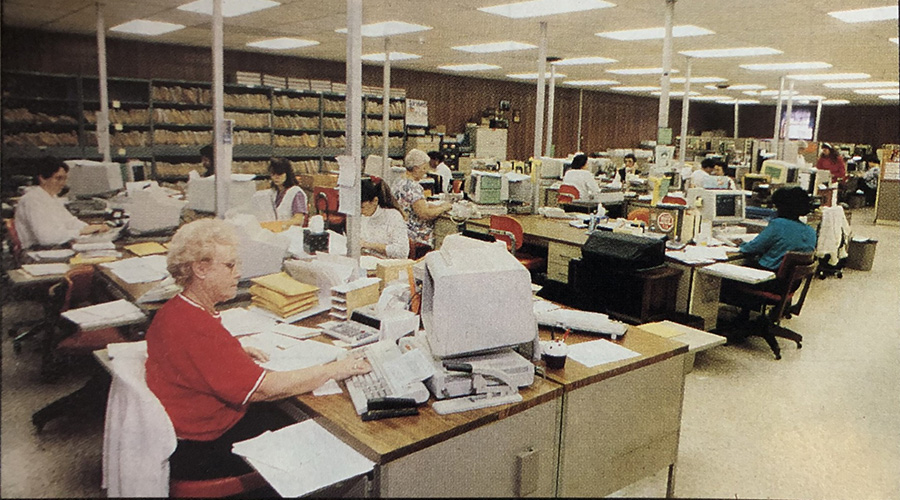Thinking Like a Facilities Leader
Facility managers who want to reach the next level have to see their jobs — and themselves — in a new way
Open the pages of almost any business magazine or scan the agenda for any industry conference, and you’ll likely find something about leadership. There’s so much interest in the topic that you can sometimes find it addressed on television news programs. But when it comes to ideas about leadership, more is not always better. There are as many theories of leadership as there are authors, business executives and commentators, and the plethora of ideas can leave facility executives uncertain about what it takes to become a leader.
Just what is leadership? Is leadership in facility management different from leadership in general? What differentiates leaders in facility management? What is the difference between leaders and managers?
The debate about leadership has been going on for 30 years. The discussion is grounded in the recognition that the old scientific approach to management taught in business schools was only half the picture of what organizations needed to be successful. What was missing was the passion, vision and drive that great leaders always have, but managers may not.
The best thinkers in the field have identified an array of differences between leaders and managers. Here are some of the most important, and a brief discussion of how they apply to facility management.
- Leaders cope with change. Because of fierce global competition, corporations are focusing on factors like speed to market, differentiation in the marketplace and rapidly developing technology. The result is change that is faster and more far-reaching than in the past. As leaders, facility executives have to be able to adapt quickly to deploy the right strategies and resources as the business changes.
- Managers cope with complexity. In facility management, complex buildings, complex relationships with strategic sourcing partners and complex needs of in-house staff and customers require a strong manager to ensure the facility management enterprise is stable and orderly.
- Leaders set the direction. In facility management, the leader has to gather and assimilate a wide range of data and look for patterns, relationships and linkages to create a clear path for the future. This involves assessing the impact of corporate culture on business direction. It also requires facility executives to have the ability and willingness to take risks within the facility management organization.
- Managers plan and budget. For a facility manager, planning and budgeting should produce orderly results that are measured and evaluated. Planning and budgeting is the companion to direction-setting and serves as the reality check on whether or not the vision or direction is working.
- Leaders align people in the organization. The leader’s job is to get facility staff to move in the same direction, either to accommodate a stated direction or because change is needed. The task requires constant communication in terms of verbal messages, carefully selected symbols and feedback on success and shortcomings.
- Managers provide organization and staffing. A manager builds an organizational system to implement plans that have been created. This same manager will determine the structure of the various functions, the types of positions necessary to accomplish the work, the reporting relationships within the department and the level of autonomy individuals in certain positions will have.
- Leaders motivate people. The facility management leader needs to ensure that staff in the organization have the energy to overcome obstacles. As leaders, facility executives have to ensure that the environment within the organization inspires and energizes people so their sense of purpose, esteem, creativity and input is respected and valued. A leader knows how to involve people in decisions and how to create groups that work together to solve problems or develop innovative approaches.
- Managers provide control and problem solving. This is among the least glamorous aspects of management, but it is necessary. Systems and processes need to work smoothly. For a facility management organization, there must be standard systems and processes to guide the staff. The manager needs to ensure these are in place to help workers complete routine jobs successfully day after day. The facility manager looks at the plan and takes action when deviations occur so the organization achieves the targets and objectives it has laid out.
Why Become an FM Leader?
With so many challenges facing facility management organizations these days, the decision to take on a leadership role often is a difficult one. In making the decision about whether to set off on a career path toward a leadership position, facility professionals should take stock of themselves. The following abilities are widely accepted as being essential for anyone who wants to move into a position of leadership.
- Take charge of and communicate the vision for organizational change.
Nowhere is the need for leadership more apparent than when reshaping a new facility organization’s alignment. An individual who wants to become a leader must be able to design and articulate a vision for a reconfiguration of an organization and know how to engage other facility staff as agents for the change. It doesn’t matter if the organizational change is as small as a work unit or as large as a whole facility department, a leader has to be clear on how resources should be aligned and then enlist the support of others to make it happen.
At some point, facility leaders will face an internal realignment. This means that leaders have to be willing to take on the role of change agent to optimize human resources to meet business changes.
- Use quarterly and annual metrics to measure results rather than focusing on short-term wins.
Facility leaders know that consistently positive results are the goals for any facility management organization, individual work unit or special project. Aspiring leaders have to be willing and able to manage the results process and focus on long-term gains. The concept of using results as a diagnostic tool for those involved — whether it is improved customer relations, reduction of operating costs, improvement in operating efficiency or completion of a renovation or retrofit — is essential to leading in facility management. Potential facility leaders should be sure they understand the connection between behavior and outcomes and are willing to build a staff capable of having an open and honest dialogue about milestone attainment. Individuals who want to achieve quick fixes and short-term results often do not make the best leaders because they lack the patience to develop staff skills to sustain long-term results.
- Recognize the leader doesn’t always have all the answers.
In facility management, as in any professional environment, individuals who have a proven track record in a technical area and may be well known as “the answer person” often get promoted into leadership positions. When they move into this role, the tendency is to continue to believe that staff expect them to be all-knowing and have the answer to every problem or situation.
Truly effective leaders, however, know that their job is to help others sort out the right answer, not always be the point person. Instead of controlling or dominating the process, a successful leader drives the problem-solving and decision-making process. An aspiring facility leader must have a clear appreciation for the power of collaboration, rather than control, to encourage those around the leader to come to the right decisions. An individual who does not feel the need to be right all the time will likely become the type of leader the organization requires.
- Understand the constraints of time and use it strategically.
This concept often is one of the most difficult for budding facility leaders to grasp. That’s because time is an element that always seems to be in short supply. Savvy leaders know, however, that trying to squeeze too much into a limited time period often backfires. Perhaps the classic example in facility management is the team leader who promises the build-out of new space within a tight timeframe, knowing that staying on schedule will be next to impossible. Project staff become over-committed, suppliers and vendors can’t deliver on time, and the client ends up unhappy. An astute leader commits to doing fewer things well, knowing that the team may meet or exceed expectations.
An individual who is accustomed to standing over staff and driving them to work harder because of time constraints probably will not become an effective leader.
- Create and sustain a healthy culture in the facility management organization.
Of all the concepts associated with facility leadership, the ability to create a healthy and productive work environment may be the most important. Assuming a leadership position in facility management requires the individual to diagnose an organization’s culture to determine what is working and what is not. A healthy facility management culture is the outcome of shared vision and clearly stated goals, open communication channels throughout the organization, open-book information sharing among all levels of staff and a general feeling of positive contribution by all.
Becoming an FM Leader
The facility profession needs more great leaders. There are several concrete steps that will point you in the right direction for leadership positions.
- Be a good follower. When you are part of a facility work group, team or large organization, stand out as a good follower. Follow directions and guidelines established by the leaders and hit the milestones that have been established for your team and you as an individual. Make certain that you surround yourself with strong people and never act threatened by those on your team or in your immediate work group who are smarter or better technically.
If you question a direction or guideline, do so in a collaborative manner and always provide an alternative idea for others to consider. Anticipate problems and bring them to the attention of the group, and involve the others in the problem-solving process. If assignments are handed out, volunteer for the more difficult ones to demonstrate your willingness to take on challenges.
- Establish a reputation for integrity. Leading a group to greatness requires an individual to have impeccable integrity. Make sure in your dealings with outsource service providers and vendors, internal clients and facility staff that you establish a reputation for honesty, fairness, open-mindedness and the utmost integrity.
Be clear to yourself that you want to be known as an individual who is respected by others, rather than someone who is necessarily liked by all. If you are more interested in being well-liked, it may cloud your judgment and affect your ability to maintain your integrity. Stay focused on the future and the end result you are seeking.
- Be known for the analytic process as well as results. To separate yourself from others in the FM organization, make certain you know how to brainstorm with others, create a strategy map or plan of action, gather and process information, and formulate a reasoned and fact-based business case for your conclusion. You want to be results-oriented, but not to the point where others involved in the effort aren’t building analytic and decision-making skills. If you serve as the process moderator and help your team or work group reach the right conclusion, you will come to the attention of those who are looking for leadership characteristics.
- Learn from every situation. Even when things don’t turn out as planned, you should be able to learn from experience. You can be the individual who makes sure that lessons learned are included in every project or work assignment, and that the successes and failures help to mature the staff involved. Every successful leader has the capacity to learn more, and you want to demonstrate this trait. Remember, as a leader, you never have all the right answers. The common denominator for all leaders is that they stand out in a crowd by their ability to inspire others to greatness.
Stormy Friday is the founder and president of The Friday Group, an international facilities services consulting firm. She previously served for three years in the appointed position of director of facilities and support services at the Environmental Protection Agency, responsible for more than four million square feet of laboratory and office real estate. She has also written a book on facilities management and co-authored another.
HOMEWORK
Leading Thinkers Focus on Leadership
Any discussion about leadership owes a great deal to a pair of pioneering Harvard Business School professors. Abraham Zaleznik launched debate on the characteristics of leadership in 1977 with a scathing Harvard Business Review article on the distinctions between leaders and managers, “Managers and Leaders: Are They Different?” Although that article is now 30 years old, it is still relevant today because it clearly lays out the differences between managers and leaders.
A second critical figure was John P. Kotter. His 1990 Harvard Business Review article “What Leaders Really Do” took on the important task of describing the roles and responsibilities of leaders. Kotter is worth reading today because he presents a sustainable viewpoint on leadership and management. My discussion of the differences between leaders and managers is based on Kotter’s work.
The work of Zaleznik, Kotter and others like them has fueled a continual development of the concept of leadership. An excellent recent example is John Hamm’s May 2006 article “The Five Messages Leaders Must Manage” from Harvard Business Review.
|
Related Topics:











